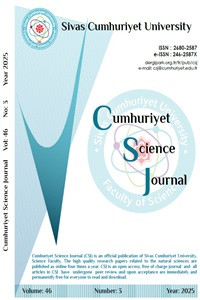Abstract
Ab initio density functional theory (DFT) calculations have been used to determine the band gap of the 2D layered material WSe2 under uniaxial strain. This involves finding optimised lattice parameters and calculating the electronic band structure. We also note that by applying strains ranging from -15% to 15%, a wide range of band gaps can be obtained to study the behaviours of the semimetal and metal. We found, WSe2 structure becomes semi-metal at +12% and -13% strains then or also becomes metal after +12% and -13% strains. The ensuing outcomes are then applied to the domain of machine learning. Initially, PR, which is polynomial regression, is a machine learning method that can be studied with numpy, sklearn and scipy modules, and ANN (artificial neural network) is the application with tensorflow module that is applied to the optimised semi-metallic and metallic structures. The application of the latter involves the Least Squares method. The implementation of Leaky Relu (LRelu) and Elu functions is instrumental in facilitating the deployment of ANN. The potential dataset is obtained by using Quantum Espresso, and the calculations are made by using the National Center for High Performance Computing of Turkey (UYBHM). The PR and ANN results are calculated using the existing data set. The primary objective of utilising PR and artificial neural networks is to facilitate the plotting of Valance Band Maximum (VBM) and Conduction Band Minimum (CBM) graphs in the vicinity of the Fermi level.
This study based on data which are already available and could therefore be considered to be data mining. on the electronic band structure for WSe2.
References
- [1] Chhowalla M., et al., The chemistry of two-dimensional layered transition metal dichalcogenide nanosheets, Nature Chemistry, 5(4) (2013) 263-275.
- [2] [Mak K.F., Lee C., Hone J., Shan J., Heinz T.F., Atomically thin MoS2: A new direct-gap semiconductor, Physical Review Letters, 105(13) (2010) 136805-136819.
- [3] Splendiani A., et al., Emerging photoluminescence in monolayer MoS₂, Nano Letters 10(4) (2010) 1271-1275.
- [4] Wang H., Wang X., Xia F., Wang L., Jiang C., Xia F., Black phosphorus and transition metal dichalcogenides for energy applications, Nature Reviews Materials, 3(9) (2018) 701–713.
- [5] Xiao D., Liu G.B., Feng W., Xu X., Yao W., Coupled spin and valley physics in monolayers of MoS2 and other group-VI dichalcogenides, Physical Review Letters, 108(19) (2019) 196802-196806.
- [6] Geim A.K., Grigorieva I.V., Van der Waals heterostructures, Nature, 499(7459) (20132) 419–425.
- [7] Novoselov K.S., Mishchenko A., Carvalho A., Neto A.H.C., 2D materials and van der Waals heterostructures, Science, 353(6298) (2016) 461-472.
- [8] Giannozzi P., Baroni S., Bonini N., Calandra M., Car R., Cavazzoni C., Ceresoli D., Chiarotti G.L., Cococcioni M., Dabo C., Dal Corso A., Fabris S., Fratesi V., Gironcoli V., Gebauer R., Gerstmann U., Gougoussis V., Kokalj A., Lazzeri M., Martin-Samos L., Marzari N., Mauri F., Mazzarello R., Paolini S., Pasquarello A., Paulatto L., Sbraccia C., Scandolo S., Sclauzero G., Seitsonen A.P., Smogunov A., Umari P., Wentzcovitch R.M., QUANTUM ESPRESSO: a modular and open-source software project for quantum simulations of materials, J. Phys: Condens. Matter, 21 (2009) 395502 1-19.
- [9] Giannozzi P., Baseggio O., Bonfà P., Brunato D., Car R., Carnimeo I., Cavazzoni S., de Gironcoli C., Delugas P., Ruffino F., Ferretti A., Marzari N., Timrov I., Urru A., Baroni S., Quantum ESPRESSO toward the exascale, J. Chem. Phys.,152 (2020) 154105 1-11.
- [10] Türeci R.G., Machine Learning Applications to the One-speed Neutron Transport Problems, Cumhuriyet Science Journal, 43 (2022) 726-738.
- [11] Xu B., Wang N., Chen T., Li M., Emprical Evaluation of Reflected Activations in Convolutional Network, arXiv:1505.00853v2 (2015).
- [12] Kingma D.P., Ba J.L., Adam: A method for Stochastic Optimization, arXiv:1412.6980v9 (2017).
- [13] Perdew P.J, Burke K., Ernzerhof M., Generalized Gradient Approximation Made Simple, Phys. Rev. Lett., 77 (1996) 3865-3868.
- [14] Kresse G., From ultrasoft pseudopotentials to the projector augmented-wave method, Phys. Rev. B, 59 (1999) 1758-1775.
- [15] Chadi D.J., and Cohen M.L., Special Points in the Brillouin Zone, Phys. Rev. B, 8 (1973) 5747-5753.
- [16] Monkhorst H.J., Pack J.D., Special points for Brillouin-zone integrations, Phys. Rev. B, 13 (1976) 5188-5192.
- [17] Mortazavi B., Rahaman O., A. Dianat A. and Rabczuk T., Mechanical responses of borophene sheeys: a first-principales study, Chem. Phys., 18 (2016) 27405-27413.
- [18] Şahin H., Cahangirov S., Topsakal, M., Bekaroğlu E., Aktürk E., Senger R.T. and Ciraci S., Monolayer honeycomb structures of group-IV elements and III-V binary compounds: First-principles calculations, Physical Review B, 80(15) (2009) 155453-1 - 1554353-12.
Details
| Primary Language | English |
|---|---|
| Subjects | Material Physics |
| Journal Section | Natural Sciences |
| Authors | |
| Publication Date | September 30, 2025 |
| Submission Date | February 14, 2025 |
| Acceptance Date | September 8, 2025 |
| Published in Issue | Year 2025 Volume: 46 Issue: 3 |

